- Home
- Recreation
- Snorkelling
Snorkelling
Discover Mosman‘s Marine Life
Chowder Bay is home to amazing marine life, both plants and animals that live on the jetty, pylons, nets and the sea floor. We encourage you to snorkel Mosman‘s Chowder Bay and discover this underwater world and its marine life for yourself. Here is a sneak peek of what you might find…
Kelp and algae

You can be forgiven for overlooking kelp and algae whilst you are on a snorkelling adventure. They don‘t have the cute and cuddly factor, but they do play a very important role in the local marine environment. They are a food source for many different types of fish, and provide habitat for other animals.
Leather Kelp (Ecklonia radiata) is the most common species of kelp found in Southern Australia and has a large holdfast which enables it to attach to rocks, pylons and netting. Leather Kelp, also known as Common Kelp is robust, and can withstand strong ocean currents. At Chowder Bay you will see the Leather Kelp attached to jetty pylons and the swimming net.
Did you know… Kelp is a type of brown algae? It can also grow up to 2m long!
Padina crassa is another type of brown algae. It looks more like cos lettuce, and is much smaller than the Leather Kelp. It is found in more sheltered areas, including on the pylons at Chowder Bay.
Decorator crab and sponges
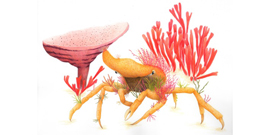
Sponges – plants or animals?
Sponges are in fact animals! They are simple filter feeding animals that tend to attach themselves to hard surfaces like rocks, or in the case of Chowder Bay, pylons and the swimming net.
Did you know? There are close to 1000 different types of sponges found in southern Australia.
Decorator crabs
Hidden amongst the sponges you might be lucky enough to see a decorator crab. They will use their pincers to cut sponges or seaweed before sticking it to their body to camouflage themselves.
Rays
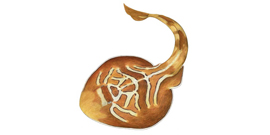
When you hear the word “ray” most people will automatically think of stingrays, but the ray family extends beyond the well-known stingrays. This includes guitarfishes, Fiddler Ray and Shovelnose Ray, Numbfish, Electric Rays, Skates, Singrays, Eagle Rays and Stingarees.
The Eastern Fiddler Ray (Trygonorrhina fasciata) can be found throughout Sydney Harbour. Also known as a Banjo Shark, these animals tend to be found in sandy shallow water, and grow up to 1.2m long. They are carnivorous foraging for crustaceans and molluscs on the sea floor.
WARNING: Some rays have a venomous barb, so be careful not to touch or step on them.
Schooling fish

Close to 80% of the world‘s fish swim in schools at some stage during their life cycle. Swimming in schools helps to protect individual fish against predators, and makes swimming easier for individual fish.
Eastern hulafish (Trachinops taeniatus) are one example of schooling fish which you will find whilst snorkelling Mosman. These fish grow up to 10cm, and are easy to spot with their red and yellow stripe. They get their name from their unique swimming motion. Eastern Hulafish eat zooplankton and will be spotted around pylons and sheltered reefs.
Seahorses
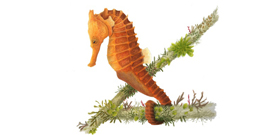
Seahorses are fascinating animals, as their biology surprises the animal world again and again. Their eyes move independently, just like chameleons, meaning they can look in two different directions at once. The male seahorse has a pouch and gives birth to live young.
Two species of seahorse which can be found at Chowder Bay are the White‘s Seahorse (Hippocampus whitei) and the Pot-bellied Seahorse (Hippocampus abdominalis).
Leatherjackets

Leatherjacket fish are easily recognised by the spine they have above their eye. In Australia there are approximately 90 species, with more than half of them found within the cooler temperate waters of Australia. Here in Chowder Bay you might find the large fan-bellied Leatherjacket and the smaller, red Mosaic Leatherjacket.
Leatherjackets are commonly caught by recreational fishers. Just be careful of their spine and rough skin.
Barnacles, oysters, anemones and limpets

Barnacles
Globally there are more than 100 different species of barnacles. You would be forgiven for thinking that they are always attached to rocks and other surfaces as adults. As juveniles though they are usually mobile and free swimming. Most barnacles are hermaphrodites, which means they can produce offspring by themselves if there are no other barnacles around.
Oysters
Oysters play a vital role in the marine ecosystem. They are filter feeders, filtering microscopic plankton, bacteria and particles from the water through their gills. Oysters also provide habitat and shelter for other small animals like snails, marine worms and crabs.
Did you know? The two shells (or valves) of an oyster are different sizes? It has one deep valve that attaches to the rock, jetty pylon or other hard surface, whilst the other valve is flat and sits on top.
Anemones
Anemones are solitary animals which are found on hard surfaces like rocks and jetty pylons. They have coloured tentacles (at Chowder Bay they are green, white or red) which are seen when the animals is submerged underwater. At low tide the tentacles are withdrawn and the anemones look like slimey blobs!
Limpets
Limpets have an oval shaped shell which protects the animal inside. Their strong, muscular foot enables them to attach to surfaces, and withstand powerful wave action and currents.
Cuttlefish
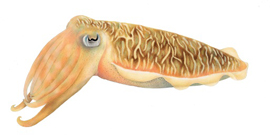
Cuttlefish, like squid have eight arms and two tentacles which they use for feeding. They are carnivorous and eat crustaceans and fish.
Like other cephalopods (squid and octopus), cuttlefish are great at changing their appearance to blend in with their natural surroundings.
The Mourning Cuttlefish (Sepia plangon) gets its name from the blueish tinge around its eyes. You might be lucky enough to see them if snorkelling at Balmoral, Chowder Bay or Chinamans Beach.
Cuttlebones help the cuttlefish remain buoyant as they swim through the water.
Did you know? Every species’ cuttlebone looks a little different. So that means that you can identify the species of cuttlefish just from the cuttlebones which are found washed up on the beach.
Old Wife Fish
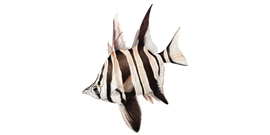
Don‘t let the strange name deter you from looking out for this fish. The Old Wife Fish is pretty easy to spot, as it has two dorsal fins. You are most likely to find this fish swimming around the jetty pylons. They like to swim in pairs or in groups.
Did you know? The name Old Wife comes from the noise they make when they grind their teeth together.
WARNING: The dorsal fin is venomous, so make sure you look but don‘t touch.
Sea hares and seagrass
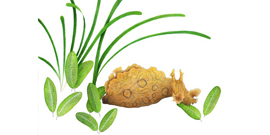
Sea hares
Sea hares often are found camouflaged amongst seagrass on the sandy ocean floor, as well as rock pools like those at Balmoral and Edwards Beach. They are commonly known as a sea slug, due to their slimey and slippery body.
These animals are hermaphrodites, reproducing in a large chain or group. Sea hares have a short life span only living on average for one year. Sea hares are herbivores, feeding on the seagrass and seaweed.
If sea hares feel threatened they will release a purple ink to deter predators.
Seagrasses
You will find patches of Strapweed (Posidonia australis), Ribbonweed or eelgrass (Zostera capricorni) and Paddleweed (Halophila ovalis) both inside and outside the swimming enclosure at Chowder Bay. Seagrasses provide a nursery area for young fish, food sources for many marine animals, improve water quality, and help reduce erosion.
Are seagrass and seaweed the same thing?
No! Seagrasses are flowering plants. Seaweed is algae.
The underwater world is a pretty incredible sight to witness. We ask that when you explore the water you take care and follow these steps:
- Look, but not touch – this is for your safety as well as the wellbeing of the marine plants and animals you might come across
- Swim with a buddy – this improves your safety, and also provides two sets of eyes to discover those incredible plants and animals
- Be aware of your surroundings – weather, tides, boats and other activities in the water can influence your underwater experience. Exercise caution throughout your swim, snorkel or dive to reduce hazards
- Take your time to observe – take it all in and increase your chances of seeing marine life. You will be amazed at what you find.
- Have fun and appreciate Mosman‘s marine life – connect with us and share your Snorkel Mosman experiences #snorkelmosman
Other great snorkel locations in Mosman:
- Balmoral, especially around Rocky Point
- Chinamans Beach
Council would like to acknowledge the support of the Sydney Institute of Marine Science (SIMS) and artist Stephanie Holm in the development and delivery of the outdoor display at Chowder Bay.
____________________________
Information sources:
- Davey, K. 2009. A photographic guide to Seashore Life of Australia. New Holland Publishers, Sydney.
- Norman, M and Reid, A. 2000. Guide to squid, cuttlefish and octopus of Australasia. The Gould League of Australia, Sydney.
Last updated Wednesday 19 January 2022
Last updated Wednesday 19 January 2022